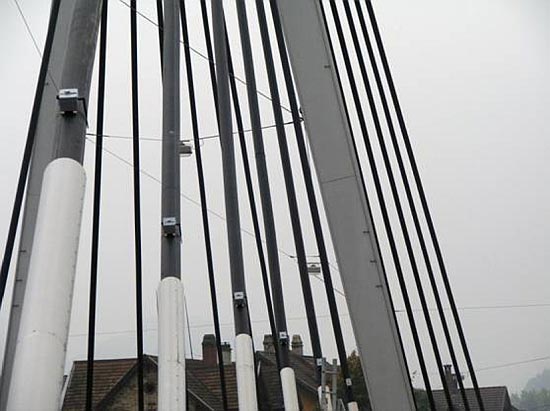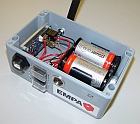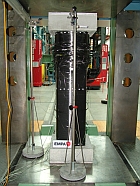Joint Workshop with the US Federal Highway Administration at Empa
Empa Know-how Used to Monitor Bridges

|
Caption: The Empa remote monitoring system on the Stork Bridge in Winterthur. The wireless system transmits changes in the measured data via radio or the internet directly to the institution..
How can we avoid bridge collapses like the one which occurred in Minneapolis? How can we make our bridges safer? These are the questions which the eighteen or so experts in this field are discussing at the meeting being held at Empa from 11th to 13th September. As spot checks have demonstrated, the state of health of many American bridges is not what it might be. The FHWA has been given the task of putting together a long-term monitoring program, the Long-Term Bridge Performance Program (LTBP). The aim is to investigate and monitor 590 representative bridges in various regions of the USA. |
||||
|
Wireless long-term monitoring of a bridge in Winterthur During the meeting the participants will pay visits to several bridges, such as the Salginatobel Bridge in the Praettigau region of Switzerland (designated a “World Monument”), and the Stork Bridge near the main railway station in Winterthur. About a year ago the latter was fitted with a total of seven Empa-developed sensors which monitor the structure and will raise an alarm at Empa over a radio link or internet connection if strong vibrations or other unusual motion is detected. |
|||
|
The advantage of this remote surveillance system is that it is relatively economic because the sensors operate wirelessly, so obviating the need for complicated and expensive wiring on the bridge structure. “No one else in the world has as much experience in long term bridge monitoring as Empa has,” says Masoud Motavalli, head of the institution’s Engineering Structures Laboratory. “If the US representatives believe that our technology is suitable for their needs, then it could very soon be used in the LTBP,” he adds. |
||||
|
Rejuvenating weak, ageing bridges with carbon fiber reinforced polymers In addition, Empa scientists are presenting the latest developments in the field of building structure reinforcement at the meeting. In Empa’s Building Hall they are, among other things, investigating the stability of bridge piers with and without the support of “sticking plasters” made of high-tech carbon fiber reinforced polymers (CFRP). The bridge piers are wrapped in CFRP tape and then subjected to varying types of load – compression, tension, bending and so on, until the piers fracture. This happened at significantly higher loads in the case of the CFRP-treated components compared to the untreated ones. “In contrast to classical reinforcing elements made of steel, CFRP is corrosion resistant and very light, which makes installation very much easier,” explains Motavalli.
Technical Information: |
|||
|
||||
|
||||


